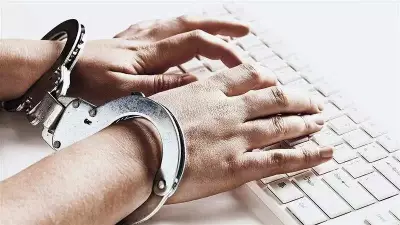
Delhi's Historic Red Fort Rocked by Deadly Explosion
A devastating car explosion near Delhi's historic Red Fort on Monday evening has claimed at least 13 lives, leaving investigators scrambling to piece together the sequence of events and identify those responsible for the terror attack.
The blast occurred around 6:30 pm on Monday when the area surrounding the Red Fort and adjacent Chandni Chowk market was crowded with people. According to eyewitness accounts and preliminary investigations, a white Hyundai i20 entered the area and exploded as it approached the main red-light intersection near the monument.
Chaos and Destruction at the Blast Site
The force of the explosion was so powerful that over a dozen vehicles were completely gutted by fire, while human remains were found scattered across a 100-meter radius from the epicenter. The iconic monument, a symbol of India's rich history, became the backdrop for one of the capital's most shocking security incidents in recent years.
Forensic teams working through the night have indicated that the explosive materials used in the blast included ammonium nitrate, fuel oil, and detonators. Samples collected from the destroyed vehicles, including the remnants of the Hyundai i20, are being analyzed to determine the exact composition and triggering mechanism of the explosive device.
The Car's Journey and Terror Links
Investigators have painstakingly reconstructed the vehicle's movement through Delhi's surveillance network. The white Hyundai i20 was first captured on CCTV cameras outside Asian Hospital in Faridabad around 7:30 am on Monday. The vehicle then entered Delhi through the Badarpur toll plaza at 8:13 am, nearly ten hours before the explosion.
Police have traced the vehicle ownership to a 34-year-old resident of Pulwama who had purchased the car on October 29. The driver has been identified as Umar Mohammad, a doctor from Pulwama, who investigators suspect had connections to a terror module that was busted in Faridabad earlier the same day.
Faridabad Raid and White-Collar Terror Module
In a significant development that occurred just hours before the Red Fort blast, Haryana Police conducted raids in Faridabad and dismantled what they described as a "white-collar" terror module. The operation resulted in the arrest of eight individuals, including three doctors, and the seizure of a massive cache of explosive materials and weapons.
The recovered items included 350 kg of explosive material comprising ammonium nitrate, potassium nitrate, and sulphur. Authorities also confiscated an arsenal of weapons including:
- A Chinese Star pistol with ammunition
- A Beretta pistol with ammunition
- An AK-56 rifle with ammunition
- An AK Krinkov rifle with ammunition
- Various chemicals, reagents, and inflammable materials
- Electronic circuits, batteries, wires, remote controls, timers, and metal sheets
Legal Action and Security Measures
Delhi Police have registered a First Information Report (FIR) at Kotwali police station under Sections 16 and 18 of the Unlawful Activities (Prevention) Act (UAPA) along with relevant sections of the Explosives Act. Multiple agencies including the National Investigation Agency are coordinating the probe.
Security has been dramatically tightened across the national capital, with enhanced vigilance at airports, railway stations, and bus terminals. Raids are continuing at multiple locations as investigators work to identify all individuals connected to the terror network.
The timing of the Faridabad module bust and the subsequent Red Fort explosion has raised serious questions about intelligence coordination and the evolving nature of terror threats to the capital. As families mourn their lost loved ones, the nation awaits answers about how such a sophisticated attack could occur in the heart of Delhi.





